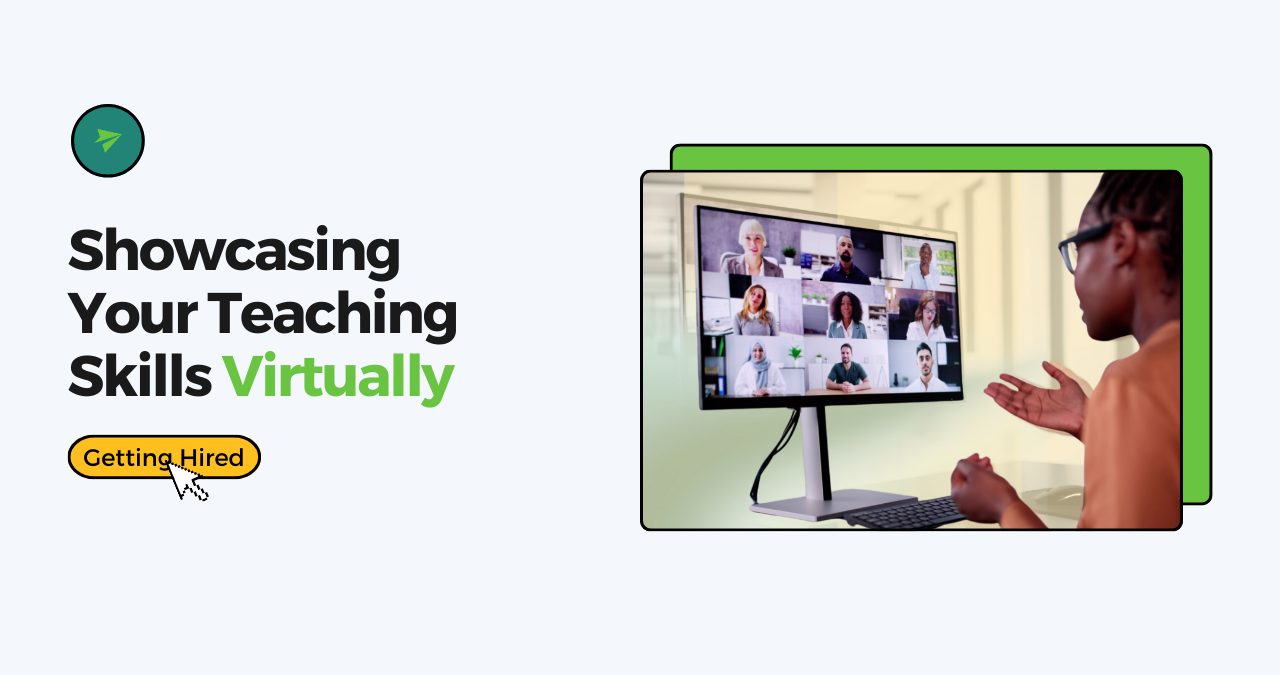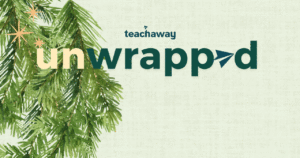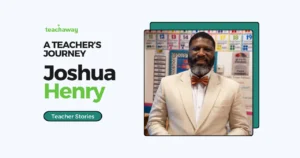You’ve made it through the interview and now you’re asked to do a demo lesson. This part can feel like the real test.
Schools and hiring teams have asked teachers to do all kinds of demos in the past. Some are short phonics activities for little learners, others might be guiding middle school kids through a math problem, or leading a discussion around a reading passage with high school students.
If you’re applying for an online role, you might even be asked to show how you’d teach with slides or digital tools.
The tricky part is that none of it feels like a normal class. You’ve got a camera in front of you or an interviewer watching every move.
The time limit is tight, and the students may not even be real. It’s easy to cram too much into the lesson, run out of time, talk way too fast, or forget to bring the students into the activity.
Here’s the mindset shift that helps: a demo lesson isn’t about showing perfection.
It’s about giving a clear snapshot of how you connect with students, keep them engaged, and stay calm under pressure. Think of it like giving a taste of your teaching style, not the entire meal.
What recruiters are really looking for
When a school asks for a demo, they want to see more than just subject knowledge. They’re looking at:
- How you manage the flow of a lesson, even in a short window
- How you’d keep students engaged and involved
- If your objectives are clear and your pacing feels right
- Your ability to stay professional while still being approachable
- Whether you adapt easily when things don’t go exactly as planned
If you focus on these bigger goals instead of trying to make everything “perfect,” you’ll be in the right headspace.
Plan your lesson with intention
Planning is your safety net. Think of it as creating a mini-version of a full class. A simple structure works best:
- Introduction: Warm up and explain what students will learn
- Main activity: Keep it interactive and age-appropriate
- Wrap-up: Reinforce the key idea and show how you’d transition out
A few tips that make planning easier:
- Pick one clear objective. Don’t try to cover everything.
- Keep the activity simple but engaging.
- Plan out timing so you don’t rush the ending.
Show off your virtual teaching skills
Since most demos happen online now, you’ll want to think about how you come across on screen. A few things go a long way:
- Make eye contact with the camera and bring energy into your voice.
- Use visuals, props, or slides but don’t let them take over.
- Ask questions, pause for answers, and show how you’d involve students.
- Do a quick tech check. Make sure your sound, lighting, and internet are solid before you start.
This shows schools you can handle the reality of a virtual classroom.
Practice and get feedback
Even experienced teachers get nervous with demos, so practice helps calm nerves. Try this:
- Run through the lesson with a friend or family member.
- Record yourself and watch it back. Notice where you rush or hesitate.
- Make small tweaks, not huge rewrites. The goal is to feel natural, not scripted.
Common mistakes to avoid
Some slip-ups come up again and again in demo lessons. Here are a few to watch for:
- Trying to cover too much content in a short time
- Talking at students instead of involving them
- Going so fast students can’t follow along
- Reading off slides or notes without connecting to the “class”
If you’re aware of these pitfalls, you’ll have a much better shot at keeping the lesson clear and engaging.
A demo lesson isn’t about showing you’re flawless.
It’s about giving schools a glimpse of how you’d create a positive learning space, even in a short and sometimes awkward setup. If you plan with intention, show energy on screen, and keep students at the center, you’ll stand out. Remember, schools aren’t looking for a performance. They’re looking for a teacher who can connect.
Recommended reading:
- Ultimate Interview Preparation 101, and Acing Your Teaching Job Interview
- 6 interview tips that will get you the job – straight from a teach abroad recruiter
- 11 most commonly asked questions during a teach abroad interview
- 11 tips for a successful teacher phone interview
- How To Answer Challenging Interview Questions | Teach Abroad Blog Round Up Series



